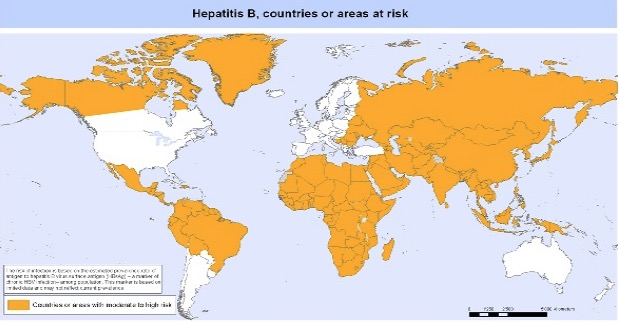As if we didn't have enough problems, for example, a particularly nasty strain of influenza going around, another infection which is normally not such a big deal has turned into one. A strain of hepatitis A, a viral infection of the liver, has been making the rounds since late 2016. And it is causing all kinds of trouble.
The current outbreak has been traced back to a homeless man in San Diego in November 2016. Although the case attracted no attention, only four months later the CDC was working with states and municipalities to control what has turned into a severe outbreak.
There is no shortage of news coverage or advice concerning hepatitis A. Rather than rehash this coverage I thought it might be informative to examine the three common viruses that cause hepatitis if only to explain what the letters mean. The letters matter. A lot.
The nomenclature of hepatitis viruses is very confusing and unfortunate. The A, B, and C viruses are related only by their target organ, the liver. Otherwise, they have little in common. (See Table 1.)
Electron microscopy images of hepatitis A (left), B (center), and C (right)
Images: Wikipedia Commons, MedicineNet.com, Kuow.com
Hepatitis A is a picornavirus - a member of a large family of viruses which contains rhinovirus (common cold), and polio. Hep A behaves similarly to norovirus, aka the "stomach flu" in that:
- It is highly contagious
- It causes nausea and vomiting
- The virus can be transmitted by the fecal-oral route, especially in restaurants
- Its spread can be minimized by hand washing
- There is no specific antiviral drug
- There is an effective vaccine
But there are also differences. To name a few:
- Hep A is sexually transmitted. Norovirus is not.
- Hep A infects the liver. Norovirus infects the small intestine.
- There is a vaccine for hep A but not for norovirus.
Functionally, hepatitis A is similar in certain ways to norovirus, but despite its name, it very different from hepatitis B and C. As shown in Table 1, the three viruses come from unrelated families and have different profiles.

Table 1. Characteristics of Hepatitis A, B, and C.
Hepatitis B is the most common of the three viruses also takes the largest toll globally. The World Health Organization estimates that 257 million people are infected worldwide resulting in 887,000 in 2105. The virus is far more common in Asia and Africa than in the US. It is primarily spread by sexual contact and blood.The FDA approved the first hepatitis B vaccine in 1981; other versions have followed.

Figure 1. Worldwide distribution of hepatitis B. Source: WHO
Although it has been more widely covered than hepatitis B, hepatitis C takes a lesser (although very significant) toll on the world. The WHO estimates that 3% of the people in the world (approximately 170 million) are infected. According to the CDC , 2.7-3.9 million people in the United States are chronically infected with the virus. Most people who are infected with hepatitis C do not know this until signs of liver failure are present, typically about two decades later. This is why hepatitis C is referred to the "silent killer." The primary route of transmission is by blood. Sexual transmission is rare. 
Global prevalence of hepatitis C. Image: natap.org
So, now you know the ABC's of hepatitis. You don't really want any of them. Although it's not a whole lot of fun, hepatitis A is "the one to pick." And you can avoid it just by rolling up your sleeve.




